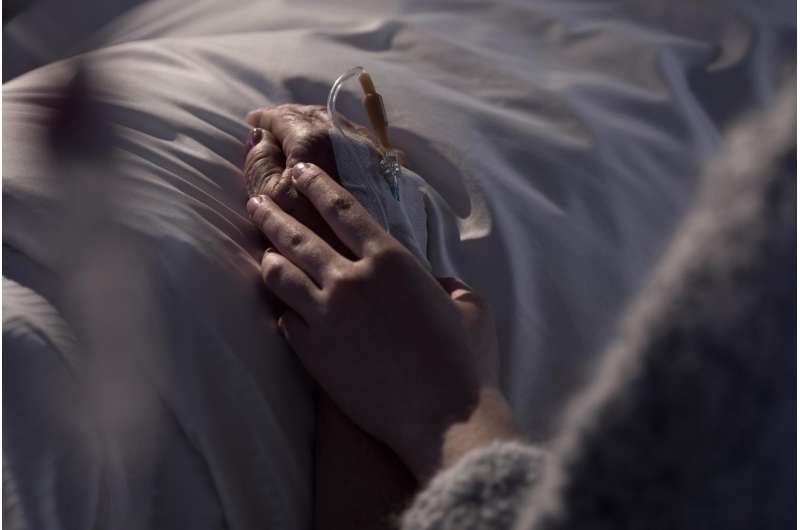Dying patients who received palliative care visited the ER less

Community-based palliative care—care delivered at home, not the hospital—was associated with a 50 percent reduction in emergency department visits for patients in their last year of life. The results of an Australian study were published online February 3rd in Annals of Emergency Medicine ("The Association of Community-Based Palliative Care with Reduced Emergency Department Visits in the Last Year of Life Varies by Patient Factors").
Researchers studied nearly 12,000 records for patients who died of cancer, heart failure, kidney failure, chronic obstructive pulmonary disease and/or liver failures in Western Australia from 2009 to 2010. Dying patients visited the emergency department on average twice a year during their last year of life. The average number of emergency department visits was reduced when patients received palliative care.
"It is encouraging that palliative care was associated with reduced emergency department visits for five different diseases, so isn't limited to just cancer or heart failure, for example," said study lead Lorna Rosenwax, PhD. of Curtin University in Perth, Australia. "Most patients who were in their last year of life visited the emergency department at least once, with one person visiting 74 times in the space of a year. Only about one-third (32 percent) of the patients we studied received community-based palliative care but they were much less likely to require emergency medical treatment as a result."
The greatest reduction in emergency department visits for patients receiving palliative care was seen in patients who were older, had a partner, lived in major cities, lived in more affluent areas and had no prior history of emergency department visits. The proportion of end-of-life patients who had three or more emergency department visits increased with younger age, geographic remoteness, social disadvantage and end-stage liver failure.
End-of-life cancer patients were most likely to receive community-based palliative care (47 percent) while end-of-life liver failure patients were least likely to receive it (13 percent).
"Ideally, high-quality palliative care should be able to manage the most common acute symptoms of the dying person without the need for hospitalization," said Ms. Rosenwax. "For these fragile patients, providing care at home should be the goal, but how we get there is the question. When planning community-based palliative care service delivery in the last year of life, it is important to consider patients' social, demographic and health factors."
More information: Katrina Spilsbury et al, The Association of Community-Based Palliative Care With Reduced Emergency Department Visits in the Last Year of Life Varies by Patient Factors, Annals of Emergency Medicine (2017). DOI: 10.1016/j.annemergmed.2016.11.036
















